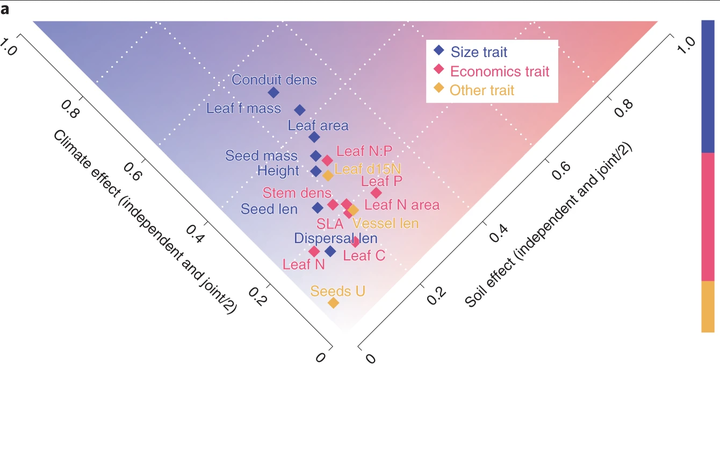Climatic and Soil Factors Explain the Two-Dimensional Spectrum of Global Plant Trait Variation

Abstract
Plant functional traits can predict community assembly and ecosystem functioning and are thus widely used in global models of vegetation dynamics and land– climate feedbacks. Still, we lack a global understanding of how land and climate affect plant traits. A previous global analysis of six traits observed two main axes of variation: (1) size variation at the organ and plant level and (2) leaf economics balancing leaf persistence against plant growth potential. The orthogonality of these two axes suggests they are differently influenced by environmental drivers. We find that these axes persist in a global dataset of 17 traits across more than 20,000 species. We find a dominant joint effect of climate and soil on trait variation. Additional independent climate effects are also observed across most traits, whereas independent soil effects are almost exclusively observed for economics traits. Variation in size traits correlates well with a latitudinal gradient related to water or energy limitation. In contrast, variation in economics traits is better explained by interactions of climate with soil fertility. These findings have the potential to improve our understanding of biodiversity patterns and our predictions of climate change impacts on biogeochemical cycles.